Finding crystals can be a rewarding adventure, offering a unique way to explore the natural beauty and geology of the region. Whether you’re a seasoned rockhound or just getting started, knowing where to look is key to uncovering these hidden treasures.
In this state, a variety of locations provide opportunities to discover different types of crystals. From rocky outcrops in the mountains to stream beds that carry sparkling surprises, each area offers its own unique finds for those willing to search.
We can help you get started with some places you can explore for crystals below!
Crystals you can find in the US
The United States offers a wide range of crystals that reflect its diverse geology. From vibrant gems to more subtle mineral formations, there’s something to discover in nearly every region.
Calcite

With a variety of forms and a unique property of double refraction, calcite allows objects viewed through the crystal to appear doubled. This mineral can appear in a spectrum of colors, with pure forms typically being transparent or white.
In addition, calcite reacts vigorously with acids, which aids in distinguishing it from other minerals. It also frequently contributes to the structure of sedimentary rocks such as limestone.
Gypsum

Gypsum’s notable softness allows it to be easily scratched with just a fingernail, often presenting as white or very light-colored in its pure form.
It manifests in both crystalline forms, like selenite, and massive forms such as alabaster, making it versatile in use and appearance.
Gypsum is also essential in the construction industry and is a key component in the manufacture of plaster and drywall.
Fluorite

Fluorite comes in a wide range of vibrant colors, including purples, greens, blues, and yellows, and is known for forming in well-defined cubic crystals.
Beyond this, fluorite exhibits fluorescence under ultraviolet light! It can also be used in various industrial applications, including as a flux in steelmaking.
Galena

Galena distinguishes itself with a metallic luster and high density, typically found in a cube-like form. It serves as the primary ore of lead, making it important in the metal industry, while its shiny, silver color attracts collectors.
Not only does its appearance make it a subject of interest, but its weight and texture provide tangible lessons in mineral density and metallic properties. Galena also often contains traces of silver, adding to its commercial and educational value.
Corundum

Corundum is a mineral that comes in a variety of colors, though it is typically transparent or gray. Its most famous forms are sapphires and rubies, which are prized for their vibrant blue and red hues.
The mineral is known for its remarkable hardness, ranking just below diamond on the Mohs scale. This durability makes corundum ideal for industrial abrasives and cutting tools, as well as a popular choice for fine jewelry.
Quartz
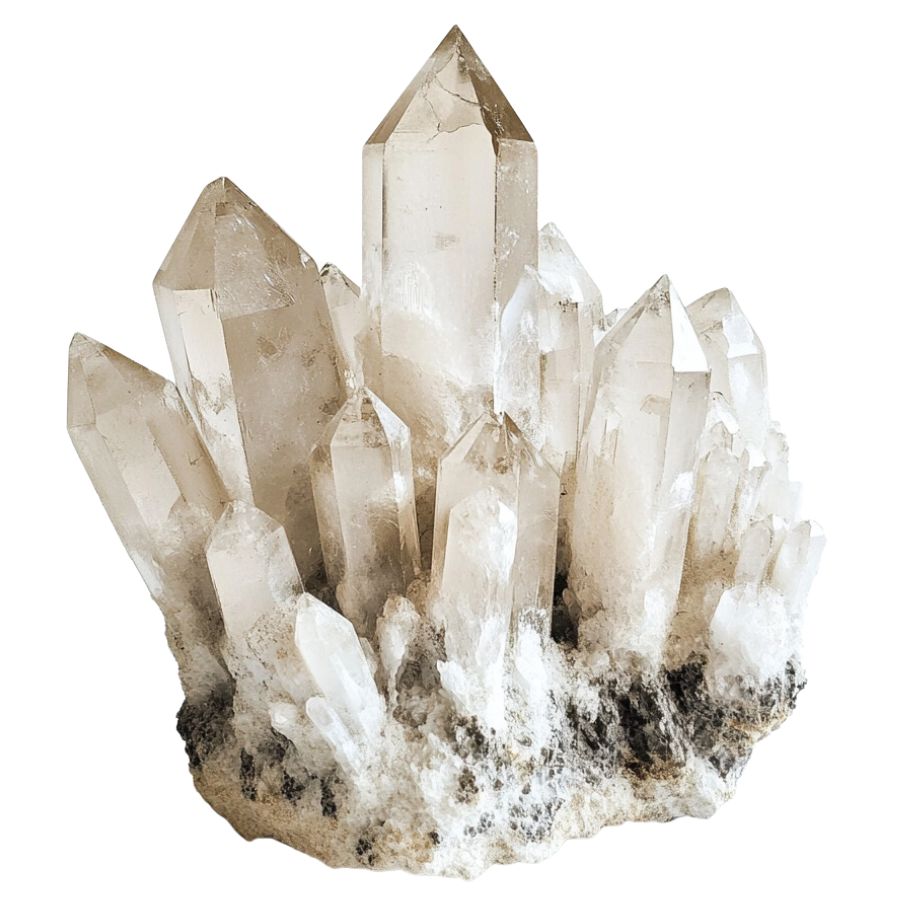
Quartz is among the most common minerals in the Earth’s crust and is prized for its durability and variety. It forms in a wide range of colors and types, from clear rock crystal to purple amethyst.
The mineral is notable for its hardness and durability, which contribute to its use in a variety of applications. Quartz is also popular in the manufacturing of electronics and watches due to its piezoelectric properties, which allow it to convert mechanical pressure into electrical energy.
Pyrite

Often mistaken for gold due to its metallic luster and pale brass-yellow hue, pyrite is known colloquially as “fool’s gold.” Its characteristic cube-shaped crystal formations look man-made but are actually completely naturally formed!
Pyrite also has historical importance in producing sulfur dioxide for sulfuric acid production.
Rhodochrosite
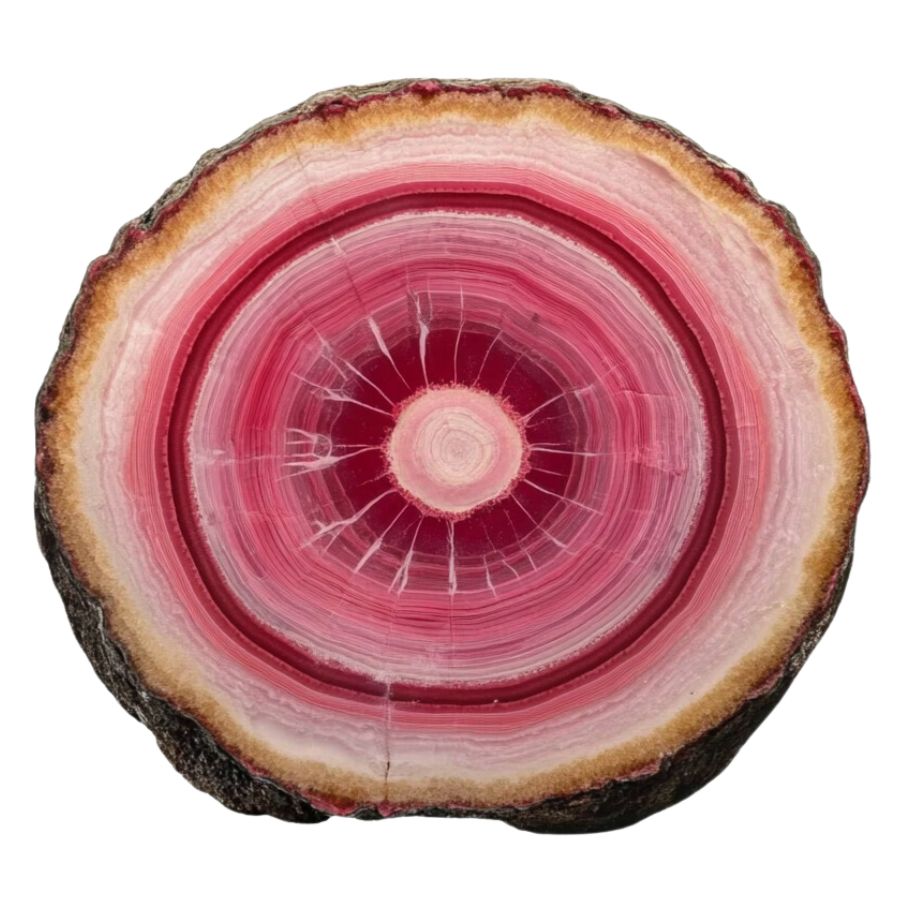
Rhodochrosite stands out with its rich pink and red hues, making it highly desirable as both a mineral specimen and a gemstone.
It typically forms in layered or stalactitic structures, with bands of colors that showcase how it grew over millions of years.
Beyond its beauty, rhodochrosite is significant as the main source of manganese, an essential element used in metal alloys.
Rhodonite

Appreciated for its deep pinks and reds, often complemented by black manganese oxide veins, rhodonite presents a dramatic appearance. It is typically found in metamorphic rocks and is used both as an ornamental stone and in jewelry.
In geology, rhodonite is significant for its role in metamorphic processes and its association with other manganese-rich minerals. It can be found in metamorphosed sedimentary rocks and is sometimes used as an indicator of the presence of manganese deposits.
Vivianite

Vivianite, an iron phosphate mineral, emerges in low-oxygen environments like peat bogs or iron-rich deposits. Its striking blue to green color, which can change to a lighter shade over time due to oxidation, makes it a distinctive mineral.
Found in various geological settings, vivianite provides clues about the local conditions and the presence of phosphate deposits.
The Types of Ohio Crystals You Can Find
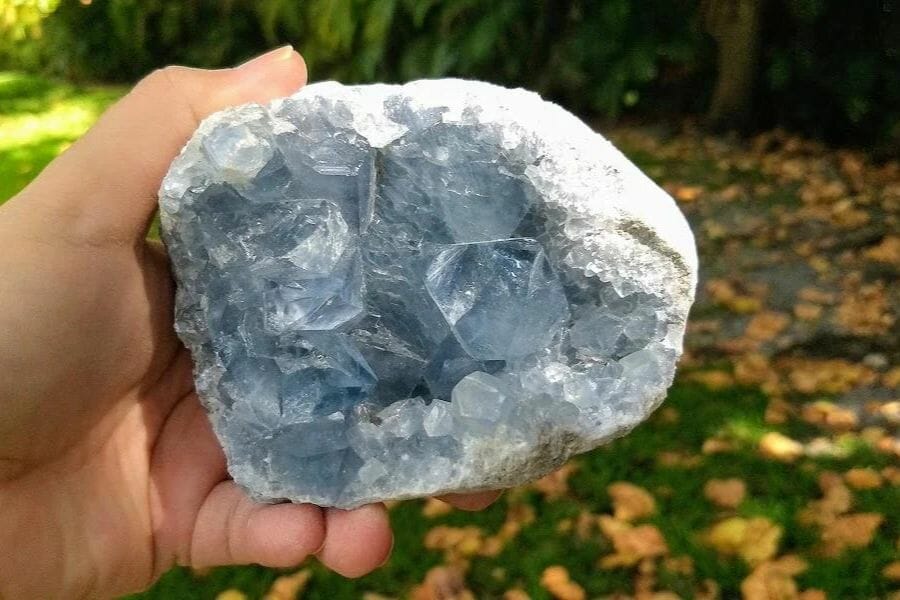
Crystals in Ohio come in a variety of forms and sizes. From the large quartz crystals to the tiny crystals that glimmer, there is something to be discovered and admired by all.
Whether you’re looking for a piece of amethyst or a celestite geode, you will find something special among Ohio’s crystal bounty.
Rare crystals found in Ohio
- Agate
- Amethyst
- Carnelian
- Chalcedony
- Jasper
- Quartz
More common crystals found here
- Calcite
- Celestite
- Fluorite
- Hematite
- Pyrite
What rough crystals look like
When you’re out looking for crystals on your own it’s important to know what you’re looking for. This is what you need to look out for:
Look for exteriors like this

When you’re out searching for crystals in the wild, it’s essential to keep in mind that what you find won’t look like the polished stones you see in stores. One important tip is to consider what certain crystals look like in their raw, natural form.
Without the shine and smooth finish, crystals might appear rough, with jagged edges or earthy tones masking their true beauty. Understanding this can help you spot potential finds that might otherwise be overlooked.
Examine the crystal structure and shape

Crystals often form in specific geometric patterns that can be key to identifying them. For example, quartz is known for its hexagonal prisms, while halite typically forms cubic shapes.
By recognizing these distinct patterns, you can differentiate between various types of crystals and better understand what you’ve found.
Observe color

Some crystals are known for their distinct hues, like the deep purple of amethyst or the vibrant green of emerald. However, not all crystals will have strong colors; some may be clear or only slightly tinted.
Check the luster

Luster refers to how a crystal’s surface interacts with light. Some crystals might have a shiny, glassy luster, while others may appear metallic or dull. This characteristic can help you determine the type of crystal you’ve found.
However, it’s important to remember that luster isn’t always obvious right away. In some cases, a crystal’s true luster will only become apparent after it’s been cleaned or polished, so keep this in mind as you examine your finds.
Evaluate the transparency

Pay close attention to how much light passes through the crystal. Some crystals are completely clear, allowing light to pass through easily, while others may be opaque and block light entirely.
You might also encounter crystals with translucent edges but opaque centers. These variations in transparency can offer valuable clues about the type of crystal you’ve found, making it easier to identify and appreciate your discovery.
A Quick Request About Collecting
Always Confirm Access and Collection Rules!
Before heading out to any of the locations on our list you need to confirm access requirements and collection rules for both public and private locations directly with the location. We haven’t personally verified every location and the access requirements and collection rules often change without notice.
Many of the locations we mention will not allow collecting but are still great places for those who love to find beautiful rocks and minerals in the wild without keeping them. We also can’t guarantee you will find anything in these locations since they are constantly changing.
Always get updated information directly from the source ahead of time to ensure responsible rockhounding. If you want even more current options it’s always a good idea to contact local rock and mineral clubs and groups
Tips on where to look
Having a better idea of where to look can greatly narrow down your search and increase your chances of finding crystals. By focusing on environments where crystals are likely to be exposed, you can spend less time searching and more time discovering.
Outcrops and Exposed Rock

Rocky outcrops are prime locations for finding crystals and minerals. Search along the edges of outcrops, particularly where erosion has worn away the surrounding soil, revealing the rock underneath.
Pay close attention to any visible cracks, crevices, or small cavities within the outcrop, as these are often where crystals develop and can be extracted with minimal effort.
Stream Beds and Gravel Deposits

Stream beds are dynamic environments where water flow constantly shapes the landscape. Over time, water can erode rocks upstream, breaking them down and carrying mineral fragments, including crystals, downstream.
When searching in these areas, look for spots where the current has slowed, such as bends in the stream or areas behind large rocks, as these are prime locations for deposits.
Quarries and Mines

Quarries and mines are excellent places to search for crystals because they expose deep layers of rock that would otherwise be hidden beneath the surface. These sites often contain a variety of minerals and crystals that have been brought to the surface during excavation.
Pay attention to tailings piles, where waste rock is discarded, as they often contain overlooked or broken crystals. Always prioritize safety when exploring these areas and ensure that you have permission to search.
Road Cuts and Construction Sites

As roads are cut through hillsides or construction projects dig deep foundations, layers of rock and soil that have been undisturbed for millions of years are suddenly exposed.
Look for freshly exposed rock faces, especially where blasting has occurred, as this can create fissures or expose pockets filled with crystals. Be cautious around active construction sites, and always seek permission before exploring.
Mountainous Areas

In mountainous regions, erosion caused by wind, rain, and ice can wear away the softer rock, exposing harder crystals that have formed within. Focus on weathered and broken rock formations.
Look for scree slopes, where loose rock has accumulated at the base of cliffs. Additionally, areas near fault lines or volcanic vents are particularly promising, as they often have a higher concentration of minerals.
DON'T MISS OUT ON ANY GREAT FINDS!
While you're out searching for Crystals you're going to find A LOT of other interesting rocks and minerals along the way. The last thing you want to do is toss out something really interesting or valuable. It can be easy to misidentify things without a little guidance.
We've put together a fantastic field guide that makes identifying 140 of the most interesting and valuable rocks and minerals you will find REALLY EASY. It's simple to use, really durable, and will allow you to identify just about any rock and mineral you come across. Make sure you bring it along on your hunt!
Ohio Crystal Mining Laws And Regulations
Crystal mining is a popular recreational activity in the state of Ohio. The Ohio Department of Natural Resources (ODNR) regulates crystal mining operations to ensure the safety of individuals, protect the environment and conserve state resources.
ODNR requires all recreational crystal miners to obtain a valid permit before engaging in any crystal mining activity. The permit is issued for one year and must be renewed annually.
Additionally, ODNR requires that all recreational miners follow certain safety guidelines, such as wearing protective gear when working with heavy machinery and properly disposing of waste materials.
Furthermore, any crystals found on public lands must be reported to ODNR, and commercial operations require additional permits and regulations. Crystal mining can be an enjoyable experience if done safely and responsibly, so ensure you understand the regulations before getting started!
- The extensive local experience and understanding of our team
- Input from multiple local crystal hunters and crystal collecting groups
- The accessibility of the crystal mining locations
- Safety and potential hazards when collecting
- Private and public locations
- A desire to include locations for both experienced crystal hunters and those who are just starting out
Using these weights we think we’ve put together the best list out there for those who love finding new crystals for our collections!
The Best Locations For Crystal Mining in Ohio

These are the areas you should definitely visit first if you have limited time. These places are abundant in different crystals, which has left us in awe. We’re positive you’ll find many crystals you’re looking for here!
Baker Creek

Highland County, OH
Baker Creek might be worth the visit if you’re seeking a nice location in the state to uncover some stunning crystals. It’s not difficult to understand why crystal hunters have long considered this site to be one of their favorite spots. This is also one of the best places to mine gems in Ohio.
Baker Creek is also home to some of Ohio’s most beautiful scenery; it’s a great place to take a leisurely stroll and admire nature at its finest. If you’re looking for a unique way to spend your day—and to find some incredible crystals—head over to Baker Creek! It will surely be a gem of an experience you won’t soon forget!
Baker Creek is known for its abundance of crystals. The land was once owned by the Delaware Indian Nation and later ceded to the United States government. The area is rich in quartz-based minerals, which erode over time, creating an ideal environment for crystal formation.
Where we found crystals at Baker Creek
The area of ore deposits along Baker Creek in Sinking Spring is abundant in hematite.
DON'T MISS OUT ON ANY GREAT FINDS!
While you're out searching for Crystals you're going to find A LOT of other interesting rocks and minerals along the way. The last thing you want to do is toss out something really interesting or valuable. It can be easy to misidentify things without a little guidance.
We've put together a fantastic field guide that makes identifying 140 of the most interesting and valuable rocks and minerals you will find REALLY EASY. It's simple to use, really durable, and will allow you to identify just about any rock and mineral you come across. Make sure you bring it along on your hunt!
Flint Ridge
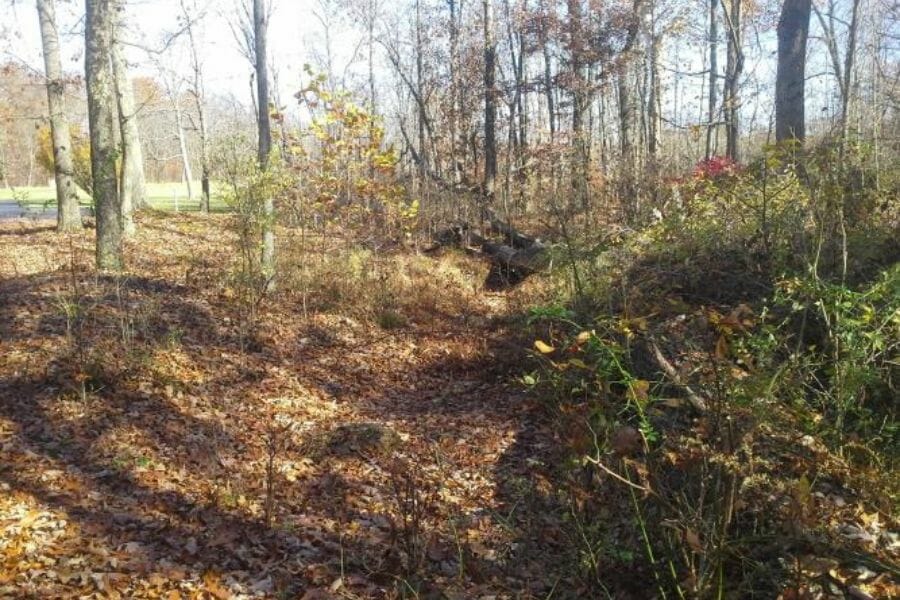
Flint Ridge is a unique and fascinating geological site located in southern Ohio. It has been a source of flint for thousands of years, and its rocky surface is littered with crystals and gems. It’s not hard to see why it’s such a popular spot for crystal enthusiasts.
The ridge stretches over a mile long, rising up to 300 feet above the surrounding countryside. It’s composed mainly of shale and limestone, which makes it an ideal place to search for crystals. Not only that, but the natural beauty of Flint Ridge makes it an ideal place just to take in some fresh air and enjoy the scenery.
With its stunning views, diverse wildlife, and intriguing geology, Flint Ridge should definitely be on your list if you’re looking for a fun outdoor adventure!
Where we found crystals at Flint Ridge
Many excellent crystals surround Flint Ridge, including agate, amethyst, carnelian, chalcedony, jasper, and quartz. You can check how much are crystals worth using this thorough guide we’ve written.
Maple Grove Quarry

1525 County Rd 42, Tiffin, OH 44883, United States
Maple Grove Quarry is an iconic site in Ohio for crystal hunters, geologists, and nature lovers. Its unique geology and topography make it a great place to find crystals. It’s located in the state’s northeast corner, nestled into a jagged limestone ridge.
The quarry was first opened in the late 1800s for industrial use, but now it’s a popular spot for people to explore and find crystals. You can easily spend an entire day here searching for quartz or amethyst crystals found deep within the cracks of the limestone.
The quarry is also home to some rare species of plants and animals, making it an interesting place to explore if you’re looking for something off the beaten path.
Where we found crystals at Maple Grove Quarry
We mostly found calcite, celestite, fluorite, and pyrite crystals at the Maple Grove Quarry in Seneca County.
Ottawa County

Ottawa County in Ohio is a great place for crystal hunting! It has a rich history and plenty of geologic features that make it an ideal spot. Located along the shore of Lake Erie, Ottawa County was initially settled by Native Americans before being claimed by the United States in the early 19th century.
Its geography is characterized by rolling hills, forests, and rivers – all perfect for discovering different types of crystals. The county also boasts limestone deposits known to contain calcite, dolomite, and other minerals. Even quartz clusters have been found in the area!
In addition to its geology, Ottawa County is renowned for its beautiful scenery. With its lush green fields, vibrant wildflowers, and stunning lake views, it’s no wonder why so many people head there when they want to find crystals.
Where we found crystals at Ottawa County
You may collect crystals in the following areas in Ottawa County:
- The area limestone quarries at Clay Center have plenty of calcite, celestite, fluorite, and pyrite crystals.
- Calcite, celestite, fluorite, and pyrite crystals are also abundant in the area quarries of Genoa.
- Fine celestite crystals and enormous masses of the same crystals fill crevices in the rock along the water’s edge of Lake Erie in Green Island.
Pugh Quarry

Town of Weston in Wood County
Pugh Quarry is a must-stop for any crystal enthusiast. The quarry is on a hillside and has been around for over 100 years. It’s known for its unique geology and abundant crystals, from quartz to calcite. The rock formations at the quarry are full of minerals that glimmer in the sun, making it a great spot to find some special treasures.
An interesting history also surrounds it; the quarry was once used as a source of limestone for nearby factories and businesses. The quarry has become a popular destination for those who want to adventure and find amazing crystals. You can spend hours exploring along the shoreline or down in the depths of the quarry, finding one-of-a-kind rocks that you won’t find anywhere else.
Where we found crystals at Pugh Quarry
We had the best luck finding calcite, celestite, fluorite, and pyrite crystals at the south and west of Pugh Quarry.
Our Other Favorite Places For Crystal Hunting
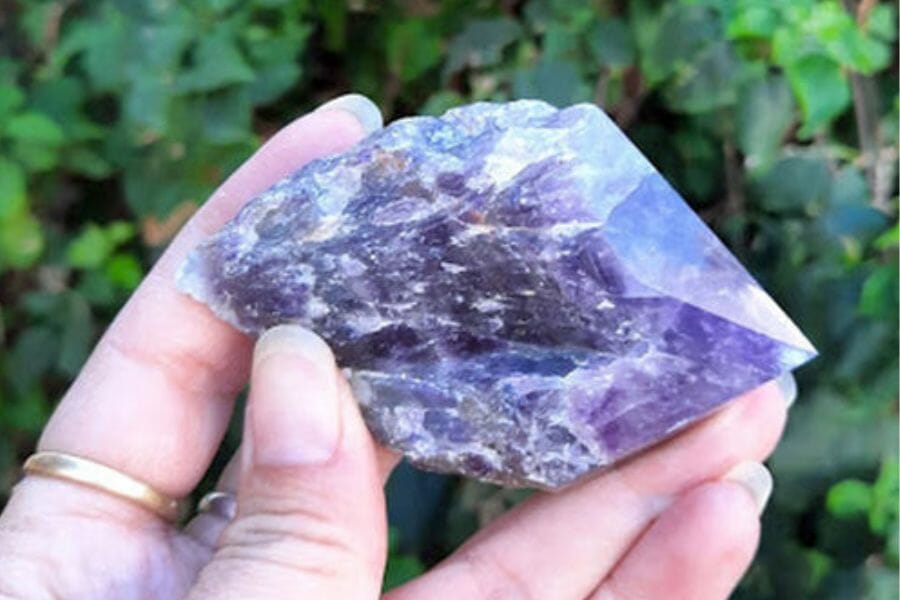
Now that we’ve shared our top five places to look for crystals, we wanted to give you a lot more options. Because the state has a vast area and a unique geological diversity, there are many awesome places to look for crystals other than the places where you can look for Ohio geodes. The following locations are worth checking out:
Where you can find crystals for free in Ohio
To kick it off, let’s talk about the various free areas you can search for crystals. Some of the most amazing destinations are free to visit, yet many of the best will also cost you money.
| County | Location |
| Ashtabula | The area pits, quarries, and road cuts of Conneaut for calcite |
| Clinton | The mineral deposit of Todd’s Ford at Wilmington for hematite |
| Delaware | Cluster and nodules of pyrite at the area county exposure of blue clay at Delaware |
| Franklin | In the area road cuts, pits, quarries, and excavations of countywide exposures of blue clay at Columbus for pyrite |
| Licking and Muskingum | Chalcedony and quartz crystal in all regional banks, stream banks, beds, and road cuts |
| Lucas | Area quarries of Whitehouse for celestite |
| Ross | Large masses of pyrite in region exposures of blue clay in Chillicothe |
| Wood | Area quarries of Lime City for celestite |
Other great places to dig for crystals
If you’re willing to pay some money to find crystals, here are the other places to go. The price will depend on the season; occasionally, it might even be free! So contact them ahead of time.
| County | Location |
| Muskingum | Area mine deposits of Zanesville for hematite |
| Putnam | Area of Rimer for fluorite |
| Tuscarawas | Regional mines of Canal Dovel, Midvale, New Philadelphia, Roswell, and Wainwright for pyrite |
The Best Crystal Shops In Ohio

Many of us enjoy making little purchases to complete our collections because the state offers a wide range of crystals dispersed across such a huge area. These are the best crystal shops we’ve found if you’re looking for distinctive and beautiful pieces for your collection.
- Bear Soul Studio and Rock Shop – 15219 Madison Ave, Lakewood, OH 44107, United States
- Coyne’s Crystal – 25 E Main St, Fairborn, OH 45324, United States
- DH Crystal Company – 240 N Liberty St M, Powell, OH 43065, United States
- Dublin Rocks and Minerals – 5911 Karric Square Dr, Dublin, OH 43016, United States
- Georarities – 2511 Essex Pl, Cincinnati, OH 45206, United States
- Momma’s Rocks – 1698 Merriman Rd, Akron, OH 44313, United States
- Oily Mama’s Creations – 3032 Martindale Rd NE, Canton, OH 44714, United States
- Rock Candy Healing Stone – 3343 N High St, Columbus, OH 43202, United States
- Rock with Sass: Crystal Shop – 611 Park Meadow Rd J, Westerville, OH 43081, United States
- V Rock Shop – 7061 Sunset Strip Ave NW, North Canton, OH 44720, United States
Additional places to find crystals in nearby states
If you’ve already tried all of our recommendations above or are planning a trip out of the state, you should check out our guides for neighboring states:
- Crystals in Indiana
- Crystals in Kentucky
- Crystals in Michigan
- Crystals in Pennsylvania
- Crystals in West Virginia
If you have any recommendations we haven’t covered please leave them in the comments below!


